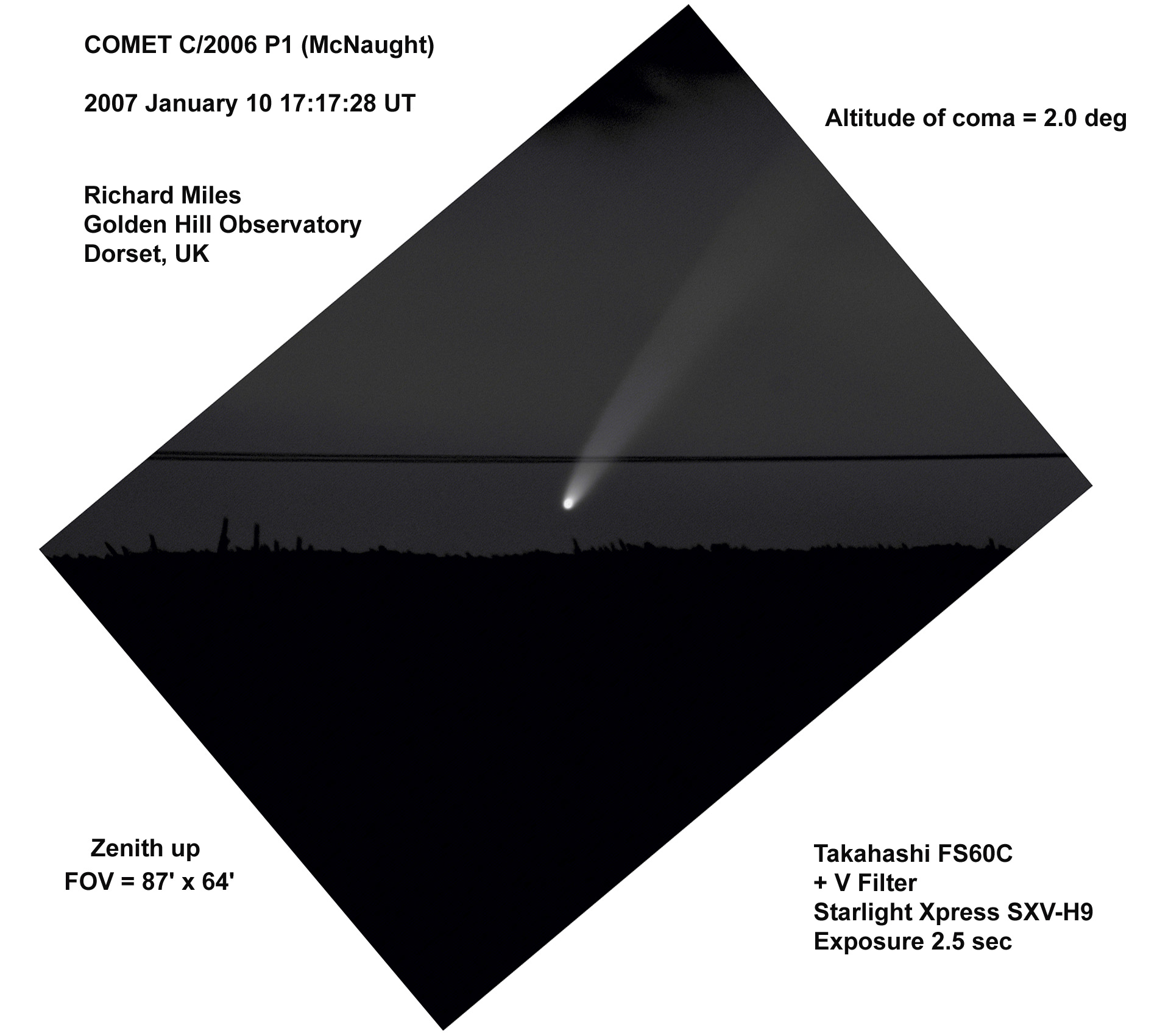Struggled to observe the comet today mainly because of clouds after sunset. Started by imaging Venus through a V filter + neutral density filter + Tak 60mm scope at 1535UT when Sun was 5 degrees ABOVE the horizon using a 20-sec exposure with an SXV-H9 camera. Then I couldn't reach the comet because the Vixen Atlux mount refused to approach closer than 15 degrees to the Sun even though the setup is supposed to let one override this limit control. In the end I found that I could cheat by setting the clock 1 hour fast and then adding 1 hour in R.A. to the pointing position. But I was too late by then as the comet was getting low and worse still, clouds were intervening. I therefore removed the neutral density filter and managed a few shots when the comet emerged from clouds just as it was disappearing from sight at an altitude of 2.0 deg. See attached taken at 17:17:28 UT with a 2.5-sec exposure. V photometry of Venus yielded 135,000 counts (equivalent to13.5 billion counts with no neutral density filter) whereas the comet's coma (3.75' dia aperture) with the 12.5 mag neutral density filter removed yielded 160 million counts for an equivalent 20 sec exposure. However the airmass difference was about 21 atmospheres equivalent to 4.2 (+/-0.5) mag approx. extinction. So that indicates the comet was 0.5 mag less bright than Venus or -3.4 (+/-1.0 mag). If there's a next time I'll do the V photometry of McNaught when the Sun is in the sky against Venus directly at similar airmass. |

Page last updated: Sun 2 Apr 08:01:38 BST 2023